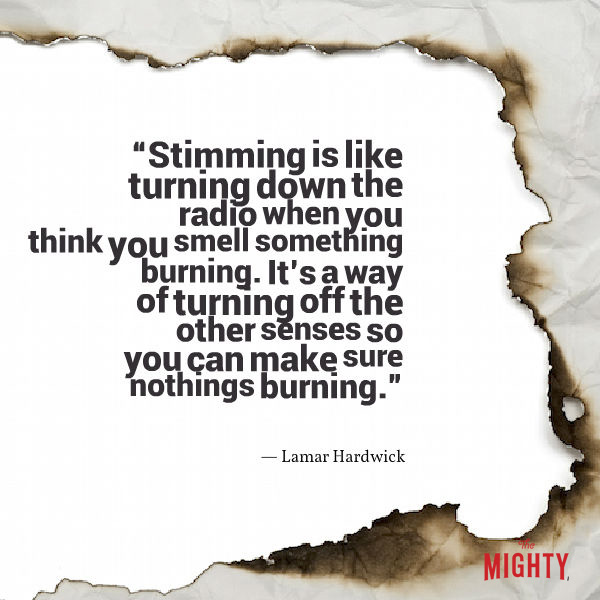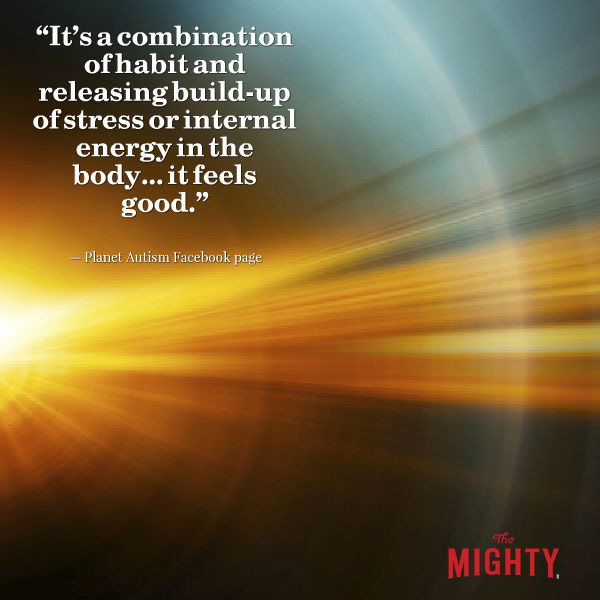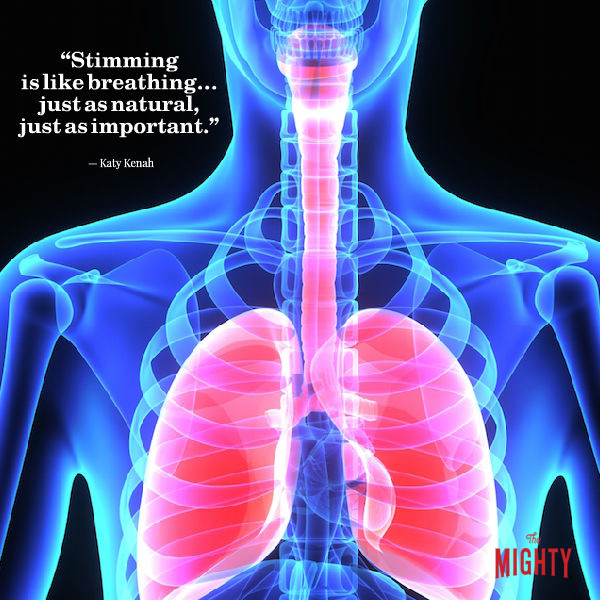Autistic people aren’t the only ones who stim, although occasionally people on the spectrum stim in more obvious ways and may attract attention. Many people have a hard time grasping why someone would stim.
We asked our readers with autism how they explain what stimming is like.
This is what they had to say:
1. “It helps my body regulate the sensory information of the world.” — Laura Ivanova Smith

2. “You know how when you’re cooking something on a stove, you sometimes move the lid slightly off the pot to let the steam out? How you put pressure on a bleeding wound to get the blood flow to stop, or at least lessen? For me, stimming is that relief and release — the preventing of inward things from exploding or running out by doing things outwardly to soothe the inward.” — Paula Gomez
3. “Stimming is like turning down the radio when you think you smell something burning. It’s a way of turning off the other senses so you can make sure nothings burning.” — Lamar Hardwick told The Mighty in an email

4. “Sometimes when I feel overwhelmed, upset or angry, I need to let it out. I feel antsy when I’m overstimulated, so I need to move around and let out some noise. It’s the only way I know how to cope. It calms me down. A common one for me is humming loudly to myself (sometimes with my ears plugged or covered) and most commonly, I’ll bounce my leg. It’s involuntary, so I don’t always realize I’m bouncing my leg. It bothers some people, but I can’t help it.”– Sydney Brown

5. “What’s it like to stim? You tell me. Most non-autistic people impulsively tap their feet, drum their fingers or let out exasperated sighs. They’re all natural forms of self-expression. The theory behind autistic stimming is the same — we’re just the ones who get called out for expressing ourselves more visibly than you!” — Chris Bonnello from Autistic Not Weird, told The Mighty in an email.
6. “Sometimes the sensory input gets too much, and I feel like I might explode. Stimming releases the tension and makes me feel a lot calmer.” — Lucy Clapham

7. “It’s the ability and opportunity to shut out external effects. I can tune into myself, reign in my energy and feel completely wrapped and enveloped in my own bubble of comfort and total relaxation. It helps ground me to reality, breathe, slow down and soothes my nervous system that is overtaxed. At best, I feel like there is no one else around and I am completely calm, free and one with the world.” — Laura Spoerl

8. “It’s a comforting thing to do. Neurotypical people probably understand and do similar things, but the difference is that autism stims feel more necessary, and trying to stop them causes unpleasantness for us. It makes me feel uncomfortable when [it] cannot be done.” — Elizabeth Alford
9. “It’s a combination of habit and releasing build-up of stress or internal energy in the body. It isn’t something you do only when you have anxiety or negative feelings, it feels good. It’s kind of necessary.” — Planet Autism

10. “When I’m stressed and overstimulated, I quietly hum or groan. When I’m extremely happy, I smile a ‘Cheshire Cat’ grin, rock back and forth and voice a little. Stimming is comforting, and it lets off pressure from good and bad emotions. I don’t necessarily think ‘I need to stim,’ I just do.” — Rachel Mills
11. “Stimming is like breathing… just as natural, just as important.” — Katy Kenah
